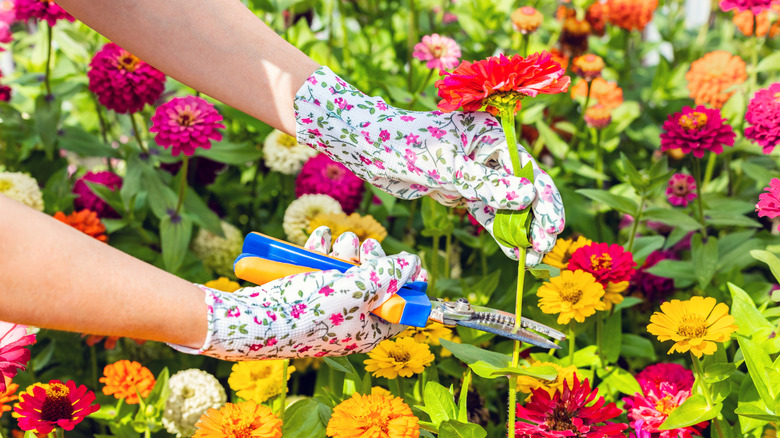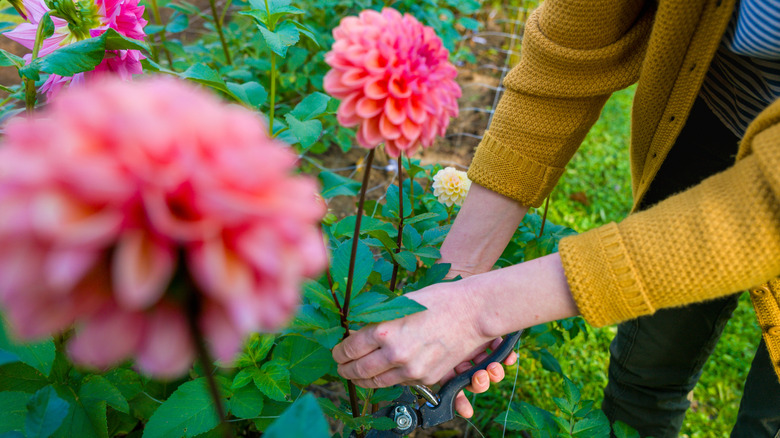The Best Time To Cut Flowers From Your Garden That Ensures They Stay Fresh For Longer
Who doesn't love fresh flower arrangements around the home? From colorful accents to seasonal tributes, freshly cut flowers bring nature indoors and add beauty to our surroundings. When those cut flowers come from our own gardens, the goal always to keep those blooms fresh in the vase for as long as possible. You've probably spent time trying to learn how to keep your cut flowers fresh longer. Ideal vase life is about seven days. The time of day flowers are cut plays a significant role in whether they achieve that ideal vase life and how fresh they look in the days leading up to their inevitable fadeout.
In most cases, the best time of day to harvest your cut flowers as close to sunrise as possible, but ideally after the dew has dried and before the day's heat has set in. It's best to wait until the dew is gone as its wetness can lead to mildew or damage to wet plants from pathogens. In the morning, plants are likely to be fully hydrated. (Tip: Don't lose a second of that hydration; carry a bucket of water with you when you harvest and immediately place freshly cut flowers in it.)
Plants respire less during cooler parts of the day, especially early morning, because respiration is temperature-dependent. Lower respiration means less energy and carbohydrate depletion, which helps maintain flower freshness. The stems of the plants you're cutting should feel firm, as they are filled with water and carbs at this point in the day. Morning is also a good time to spot brand-new blooms, which you'll likely want among your cuttings. When your goal is to keep fresh flowers in your home year-round, an early morning harvest is a great way to help this freshness last.
Cut flowers in the early morning when they are hydrated
The next best time to cut flowers is early evening, when it's also cool, and if this time of day is cooler than mornings in your locale, the later time may be your best bet. The time to avoid cutting is midday, when temperatures and stresses on the plant are at their highest. Plants are starting to dehydrate at this time of day. Stems may feel the opposite of the way they do in the morning — floppy instead of firm.
Another "when" question about cutting concerns the right stage of development for each flower you cut. For example, some flowers like yarrow and dahlia should be cut when in full bloom, while others, like celosia and salvia, are best cut before they open but when they show color. Peonies, roses, and others should be cut in the bud stage, and asters and carnations are ready when half-opened. You may find it useful to know these optimal cutting times when you're planning and choosing flowers perfect for a cut flower garden.

